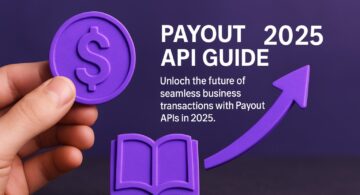9 Essential Remittance Platform Features for 2025 Success
Discover 9 essential remittance platform features for 2025 success including real time processing, security, compliance, and user centric design for optimal growth.
Published November 18, 2025 — 11 minutes read — Fintech Guides
Written by François Savard
The global remittance industry is undergoing rapid transformation, with 2025 set to mark a major turning point for digital money transfers. As user expectations rise and competition intensifies, every remittance platform must adapt by prioritizing security, speed, and convenience.
This article uncovers the nine essential features that will define successful remittance platforms in 2025. Through key insights, best practices, and actionable strategies, you will discover how to deliver an exceptional user experience and gain a lasting competitive edge.
Ready to future-proof your operations? Use this comprehensive checklist to ensure your remittance platform meets the demands of tomorrow’s digital economy.
The Evolving Landscape of Remittance Platforms
The global remittance platform ecosystem is undergoing rapid transformation as digital adoption accelerates. Shifting demographics, mobile-first behaviors, and new regulatory frameworks are driving providers to innovate quickly. To understand what is shaping the future of remittance platform success, it is crucial to examine market growth, evolving user needs, operational challenges, technological advancements, and the features that will define industry leaders in 2025.
Industry Growth and Changing User Expectations
By 2025, global remittance volumes are set to surpass $800 billion, fueled by migration, global commerce, and digital connectivity. Users increasingly expect their remittance platform to deliver instant, borderless, and cost-effective transfers. Mobile-first consumers, especially younger generations, demand seamless digital experiences and multi-currency options. Regulatory agencies are also raising the bar on transparency and compliance. For a deeper look at these industry drivers, review the Global Remittance Market Size and Trends.
Key Challenges Facing Remittance Providers
Despite growth, remittance platform providers face significant hurdles. Combating fraud and maintaining transaction security remain top priorities. Striking a balance between regulatory compliance and user-friendly experiences is essential. Providers must integrate with a wide range of banking and payment infrastructures, often navigating complex cross-border fees. Additionally, expanding access to underserved and unbanked regions is a persistent challenge, especially as financial inclusion becomes a global imperative.
The Role of Technology in Shaping Remittance Solutions
Technology is pivotal in redefining the remittance platform landscape. Artificial intelligence and machine learning enable platforms to manage risk and personalize services. API-driven integrations allow for rapid adoption by businesses and service providers, while blockchain technology is unlocking faster, more secure settlements. Enhanced mobile applications and user interfaces are simplifying the transfer process. Data analytics further optimize transfer routes, costs, and user experiences, making platforms more competitive.
What Defines a Successful Remittance Platform in 2025?
A successful remittance platform in 2025 will prioritize user-centric design and accessibility. Advanced security protocols, including real-time monitoring, are essential to protect users and meet compliance standards. Platforms must demonstrate regulatory agility and support both fiat and digital currencies. Scalable, cloud-native infrastructures will ensure reliability and future-proofing. Ultimately, the most successful platforms will be those that anticipate user needs, adapt to technological change, and maintain unwavering trust.
9 Essential Remittance Platform Features for 2025 Success
Staying ahead in the digital payments sector means building a remittance platform that goes beyond basic money transfers. In 2025, users expect seamless, secure, and instant transactions, with platforms adapting rapidly to the latest technologies and compliance demands. Here are the nine essential features every remittance platform must deliver for success in the coming year.
1. Real-Time Transaction Processing
Instant money movement is now a baseline expectation across the remittance platform landscape. Users want to send and receive funds within seconds, not days. This feature reduces anxiety for recipients and enhances satisfaction, especially for time-sensitive transfers.
A robust remittance platform supports 24/7/365 real-time transactions by leveraging advanced settlement systems and resilient backend infrastructure. For businesses, this means faster payouts, while individuals enjoy immediate access to their funds. According to industry surveys, 72% of users prefer instant transfers over standard options, making real-time capability a competitive differentiator.
Leading remittance platform providers have set the standard by ensuring instant delivery regardless of weekends or holidays. This capability requires continuous monitoring and optimization of payment rails, as well as partnerships with global financial networks. In 2025, real-time processing is not optional, but fundamental for user trust and retention.
2. Advanced Security and Fraud Prevention
Security remains at the core of every successful remittance platform. With rising transaction volumes and sophisticated cyber threats, platforms must implement multi-factor authentication, biometric checks, and end-to-end encryption to safeguard user data and funds.
Modern remittance platform providers are deploying AI-driven fraud detection, offering real-time alerts and swift intervention against suspicious activity. Compliance with global standards such as PSD2 and GDPR is critical for both user protection and regulatory approval.
User education is equally important. Platforms that communicate security practices transparently build stronger customer trust. Regular audits and timely updates ensure vulnerabilities are addressed promptly. For example, platforms leveraging AI monitoring have seen up to a 30% reduction in fraud rates, highlighting the value of proactive security measures.
3. Seamless Cross-Border and Multi-Currency Support
The ability to send and receive money across borders in multiple currencies is a hallmark of a modern remittance platform. Users increasingly demand dynamic foreign exchange rates, transparent fees, and support for both fiat and digital assets.
A leading remittance platform integrates smoothly with global banking networks and offers local payout options, ensuring accessibility for migrant workers and international businesses. Some platforms now provide coverage in over 100 countries and support more than 50 currencies.
Data shows that 65% of remittance platform users require multi-currency support for their transactions. By enabling seamless currency conversion and providing clear FX rates, platforms can extend their reach and serve a diverse, global audience.
4. User-Friendly Digital Experience
A remittance platform must offer an intuitive digital experience to attract and retain users. Clean mobile and web interfaces, personalized dashboards, and real-time transaction tracking are now standard expectations.
Onboarding is simplified with digital KYC and e-ID verification, reducing friction for new users. Accessibility features ensure that even those who are non-tech-savvy or underserved can easily navigate the platform. In-app support and self-service tools empower users to resolve issues quickly.
Platforms with a strong focus on user experience consistently report customer satisfaction scores above 90%. A user-centric approach not only boosts retention but also fuels organic growth through positive word-of-mouth.
5. Transparent Fees and Real-Time Rate Calculators
Trust is built when a remittance platform discloses all fees and exchange rates upfront. Users are wary of hidden charges and misleading promotions. Real-time rate calculators help users make informed decisions before confirming transfers.
Transparency in pricing is not just a best practice but a regulatory requirement in many regions. By offering live calculators and clear breakdowns of costs, platforms foster loyalty and reduce disputes. According to industry data, 80% of users cite hidden fees as their top frustration, while platforms with transparent pricing report up to 25% higher retention rates.
For a deeper understanding of global remittance costs and the significance of transparent fee structures, consult the World Bank’s Remittance Prices Worldwide Report.
6. Robust API and Integration Capabilities
A modern remittance platform must be built for integration. Open APIs enable seamless connectivity with business systems, third-party apps, and payment processors. This flexibility supports automated payouts, payroll, and e-commerce use cases.
Developer-friendly documentation and sandbox environments are essential for rapid deployment. Enterprise clients value scalability and customization, allowing them to tailor the remittance platform to their specific needs. Security remains paramount, with API endpoints protected against unauthorized access.
Businesses leveraging API integrations have reduced payout times by up to 50%, reflecting the operational benefits of a well-designed remittance platform. As industries diversify, robust integration capabilities become a critical factor in platform selection.
7. Regulatory Compliance and Global Coverage
Navigating the complex regulatory landscape is a challenge for any remittance platform. Adherence to AML, KYC, and local licensing requirements is non-negotiable. Automated compliance checks and real-time reporting streamline operations and minimize the risk of failed transfers.
Expanding into new regions demands agile compliance frameworks and close collaboration with regulators. Platforms with broad coverage across major remittance corridors and emerging markets are better positioned to serve a global customer base.
Statistics show that 40% of failed transfers result from compliance gaps. By prioritizing transparency and ongoing compliance, a remittance platform builds user confidence and ensures long-term viability.
8. 24/7 Customer Support and Multilingual Assistance
Exceptional customer support distinguishes a leading remittance platform. Users expect round-the-clock assistance via chat, phone, and email. Multilingual support agents are crucial for serving diverse populations across geographies.
Proactive communication on transfer status and issue resolution enhances the user experience. Personalized support for high-value clients and businesses further strengthens relationships. Many platforms now integrate AI chatbots to handle common queries instantly, freeing agents to focus on complex cases.
Platforms that achieve 95%+ resolution rates on first contact consistently earn high marks for brand reputation and loyalty. Reliable customer support is a key pillar of a successful remittance platform.
9. Scalability, Reliability, and Future-Proof Infrastructure
A remittance platform must be engineered for growth. Cloud-native, modular architectures ensure high availability and minimal downtime, even during transaction surges such as holiday seasons.
Rapid onboarding of new features and currencies keeps platforms competitive. Regular system upgrades and stress testing prepare infrastructure for future technologies, including central bank digital currencies and digital identity solutions.
Some remittance platform providers handle millions of transactions daily without outages, setting the benchmark for reliability. Investing in scalable, future-proof infrastructure is essential for staying ahead in a dynamic market.
Best Practices for Selecting and Implementing Remittance Platform Features
Selecting the right remittance platform features is critical for long-term success. By following best practices, financial providers can ensure robust performance, regulatory readiness, and a seamless user experience.
Evaluating Platform Capabilities and Vendor Transparency
Begin by building a comprehensive checklist to assess remittance platform capabilities. Look for transparency in pricing, technology, and service agreements. Request demos and trial access to evaluate user experience and platform speed.
Gather user feedback to assess real-world reliability. Examine vendor track records and ask for references to verify credibility. Consider solutions like the Payoro SuperApp for global transfers, which demonstrate multi-currency support and global reach. Prioritize vendors that offer clear documentation and open communication channels.
Balancing Innovation with Regulatory and Security Demands
When integrating new technologies, balance innovation with strict regulatory and security standards. Ensure the remittance platform complies with AML, KYC, and data privacy regulations in every operational jurisdiction.
Adopt solutions that automate compliance checks and provide real-time alerts. Platforms such as those highlighted in the Payoro Connect launch announcement show how seamless integration can boost efficiency while maintaining compliance. Always prioritize risk management and regular security audits.
Ensuring Seamless Onboarding and User Adoption
Smooth onboarding is vital for remittance platform adoption. Offer step-by-step guides, training sessions, and accessible documentation for new users. Design intuitive workflows to minimize friction during migration from legacy systems.
Provide self-service options and responsive support to address user concerns quickly. This approach builds trust and encourages faster adoption. Monitor feedback to adapt and improve onboarding processes continuously.
Measuring Success and Continuous Improvement
Define clear KPIs to measure remittance platform performance, such as transaction speed, uptime, and Net Promoter Score (NPS). Regularly collect and analyze user feedback to identify pain points and areas for enhancement.
Stay informed on regulatory changes and emerging technologies to keep your platform competitive. Schedule frequent reviews and iterate on features to maintain an agile and future-proof remittance platform.
Future Trends Shaping Remittance Platform Development
The Rise of Digital and Crypto Remittances
The remittance platform landscape is rapidly being transformed by digital assets and cryptocurrencies. As more users prioritize speed and cost, digital payment methods are gaining traction worldwide. Crypto integration enables instant global transfers, often at lower fees, while also introducing new challenges around compliance and volatility.
Market forecasts indicate the digital remittance sector will continue expanding, driven by mobile and internet adoption. According to Digital Remittance Market Growth Projections, the industry is expected to grow significantly through 2029. Regulatory clarity and user education remain vital as remittance platform providers embrace these emerging technologies.
AI, Automation, and Personalization in Remittance Platforms
Artificial intelligence is redefining the remittance platform experience. AI-powered fraud detection and automation streamline compliance, reducing manual intervention and operational costs. Personalization, powered by machine learning, is elevating the user journey with tailored recommendations and proactive support.
Recent studies, such as Visa’s 2025 Digital Remittances Adoption Report, highlight that consumers increasingly value digital features and seamless automation. By integrating advanced AI, remittance platform operators can enhance efficiency, accuracy, and trust across every transaction.
Expanding Financial Inclusion and Access
Financial inclusion is a central trend shaping the future of the remittance platform sector. Providers are innovating with mobile-first solutions, reaching unbanked and underbanked populations in remote areas. By simplifying onboarding and offering localized support, platforms are breaking down barriers to entry.
This focus on accessibility not only empowers individuals but also supports broader economic development. As remittance platform technology advances, it will play a pivotal role in bridging the financial divide and creating new opportunities for millions worldwide.
As we’ve seen, the future of remittance platforms depends on more than just sending money quickly—you need robust security, seamless integration, and a user experience that keeps both individuals and businesses coming back. If you’re looking to put these essential features to work for your organization or want guidance on how to make real-time, multi-currency, and crypto-ready transactions a reality, let’s take the next step together. I invite you to Contact sales to explore how Payoro can help you stay ahead in 2025 and beyond.
Share article on

The Essential Payment Cross Border Guide for 2025
Master payment cross border with our 2025 guide Cover regulatory updates, new methods, tech trends, and risk management...

Payout API Guide 2025: Your Step-by-Step Success Manual
Unlock business efficiency with our 2025 Payout API guide. Learn integration, security, compliance, and optimization to streamline global...

9 Essential International Money Transfer Platforms Tips for 2025
Unlock expert tips to choose the best international money transfer platforms in 2025. Discover how to ensure security,...

Direct Bank Transfer Guide: Your Essential Handbook 2025
Master direct bank transfer in 2025 with our expert guide Explore secure setup steps, benefits, troubleshooting, and future...



